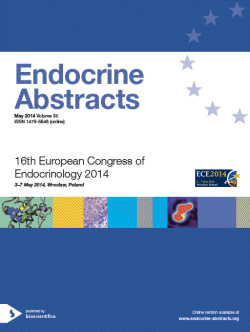Searchable abstracts of presentations at key conferences in endocrinology
Symposia
Molecular pathophysiology for clinicians: receptor-related disorders
ea0035s28.1 | Molecular pathophysiology for clinicians: receptor-related disorders | ECE2014
Abstract unavailable....
ea0035s28.2 | Molecular pathophysiology for clinicians: receptor-related disorders | ECE2014
Disorders related to nuclear receptors
Most cellular actions of the steroid and thyroid hormones, vitamins A and D, and other small lipophilic molecules are mediated through binding to nuclear receptors, which act as ligand-inducible transcription factors by recruiting coactivators and corepressors. Steroid receptors bind as homodimers to hormone-response elements (HREs) in target genes, while non-steroid receptors generally bind DNA as heterodimers with the retinoid X receptor (RXR). Our understanding of nuclear r...
ea0035s28.3 | Molecular pathophysiology for clinicians: receptor-related disorders | ECE2014
Disorders related to calcium-sensing receptor signalling
The extracellular calcium (Cao2+)-sensing receptor (CaSR) is a family C G-protein-coupled receptor (GPCR) that regulates Cao2+ homeostasis by detecting alterations in Cao2+ concentrations and triggering Gq/11 signaling cascades, which modulate parathyroid hormone (PTH) secretion and urinary calcium excretion. Loss-of-function mutations of the CASR gene, located on chromosome 3q21.1, lead to familial h...




